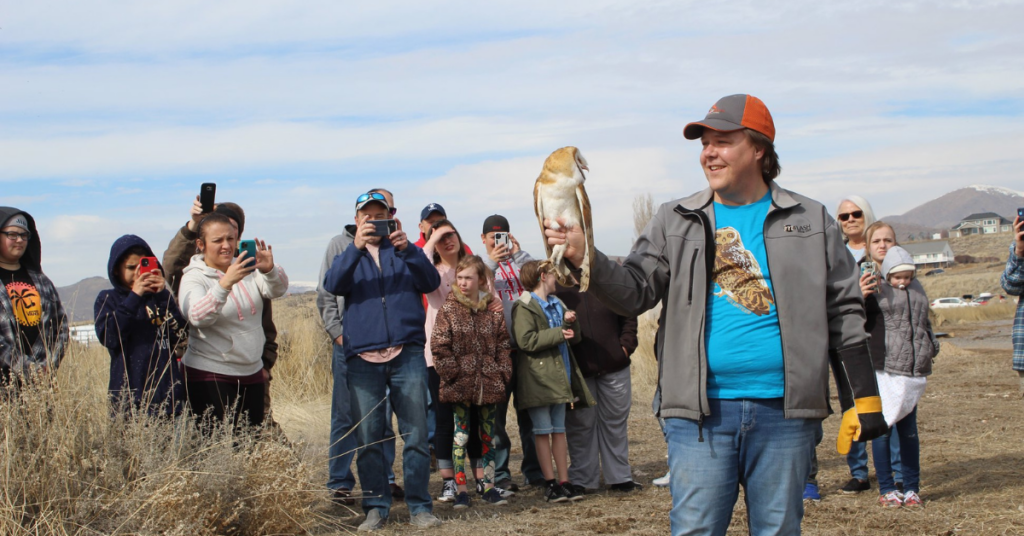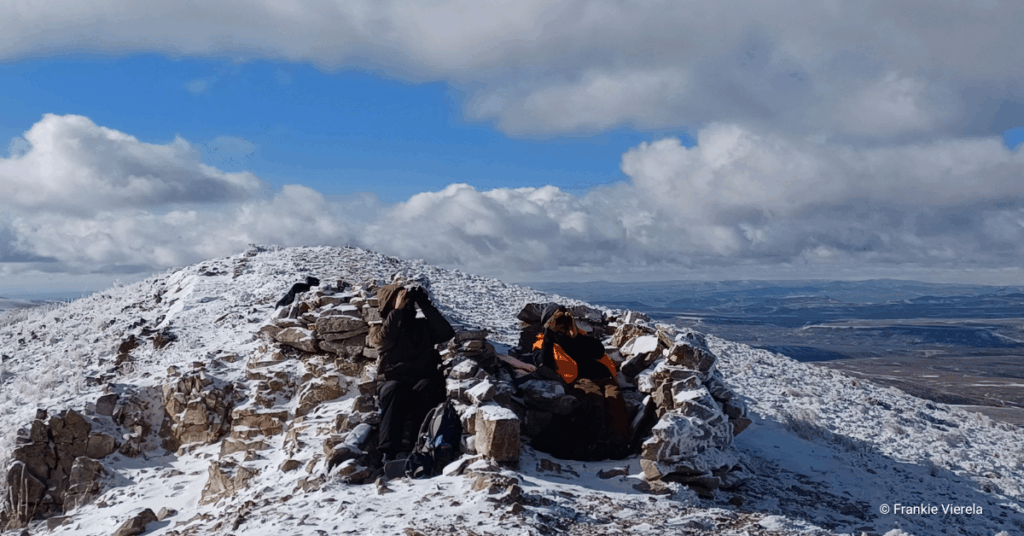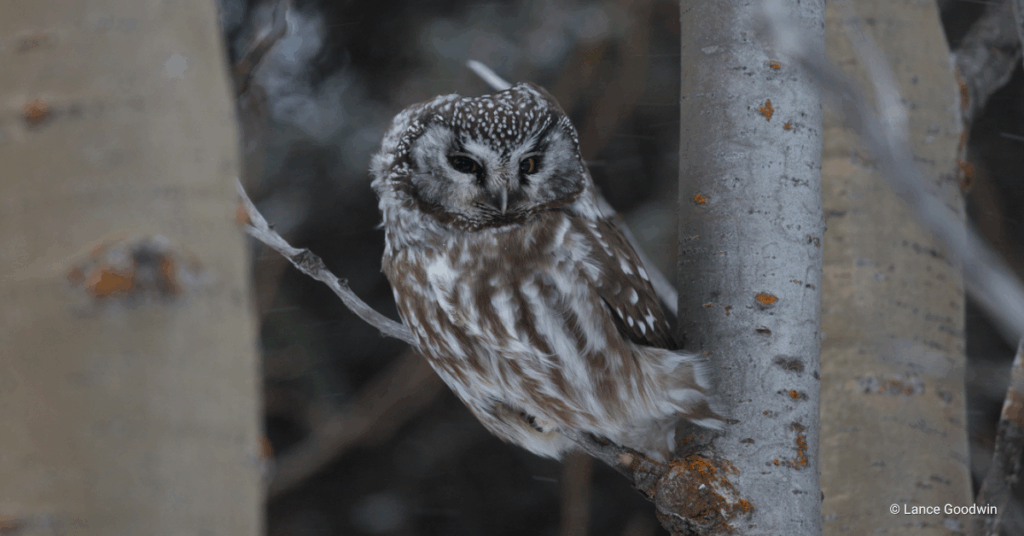How long have you been volunteering with HawkWatch International?
6 years (I think)
How did you get started volunteering with HWI?
A good friend invited me to tag along on a Short-eared Owl Survey in 2016, and I’ve been hooked ever since! In addition to the Short-eared Owl Survey, I’ve been involved with monitoring American Kestrel nest boxes, surveying urban areas for raptors, as a docent bringing Raptor Ambassadors to various events and schools, and helping to care for the Ambassadors weekly.
What is your “spark bird?”
I’ve never met anyone else with this spark bird, but mine is the Western Meadowlark. As a youngster, I would try my hardest to imitate their call, but later realized they are at an advantage with their complex syringeal muscles flexing to produce the sound. My simple voice box and whistling between lips just can’t compare. To compensate, I have set the ring tone on my cell phone to their call. Anytime I get a call, even from a telemarketer, I’m reminded of a meadowlark. I have a wonderful memory of walking through a field of sagebrush during a light rain shower, within minutes of the rain stopping and the sun coming out from behind a cloud, dozens of meadowlarks jumped to the top of bushes and sang. It was quite the experience to be completely surrounded by their choir.
What do you do outside of volunteering for HWI?
I’m a chemical engineering manager by day and have a passion for nature and wildlife outside of work. I spend as much free time as I can find observing the natural world around us. I also volunteer on the community science team at the Natural History Museum of Utah. A couple of years ago, the museum designed an exhibit titled Nature All Around Us that is now traveling to other museums across the US. My daughter and I were featured in a couple of the videos on observing nature and, in particular, tracking the spread of fox squirrels that were introduced to the Salt Lake area several years ago. I also teamed up with a group of other passionate individuals to form the Eagle Mountain Nature and Wildlife Alliance. I am the president-elect and sit on the board of directors of that organization. We work with the city council, staff, land owners, and developers in Eagle Mountain, Utah, to preserve native habitats for wildlife and future generations to enjoy in a sustainable way.
What is your favorite moment from volunteering?
My favorite funny moment was while working with Goose at an elementary school. Goose relieved herself, narrowly missing one student’s jacket. The student looked horrified, thinking the sleeve was soiled, but that horror was quickly dissipated at the teacher’s quick-thinking response, “Cool! You have the best story of anyone to tell your family!” The student’s hesitant excitement was then replaced with disappointment when he realized Goose’s aim wasn’t up to par and the mess was only on the floor.
My favorite inspirational moment was while conducting a raptor survey in an agricultural area on the edge of a new neighborhood with active housing construction. We found a Burrowing Owl near its burrow and, while watching it from a distance, noticed a Golden Eagle on a fence post about 100 yards away. Less than a mile from “civilization,” we found two somewhat uncommon raptors adapting and thriving.
Why should people care about conserving raptors?
I vividly remember laying on my back on a large boulder in the Uinta Mountains of Utah one summer about 30 years ago and watching the clouds moving across the sky. As I was drinking in the cool air and listening to the chirping of a chipmunk in a nearby lodgepole pine, I saw a hawk circling up high. I watched it for several minutes and tried to imagine the sensations it was feeling with the updraft allowing a nearly effortless glide and the view it had of the lake and surrounding mountains. Although I didn’t see it dive for prey that day, I thought of what sensations it would experience diving through the air with its wings held in a tight aerodynamic fashion and then stretching them out wide to stop the dive right as it grabbed its prey. Imagining myself in the wings of that hawk made me care about that bird and started my journey of observation and conservation.
Raptors are easily visible compared to smaller mammals and reptiles, making great barometers for the rest of the ecosystem. By watching and monitoring populations of raptors, one can deduce other data about the environment. Simply put, conserving raptors means preserving nature for future generations to continue to enjoy.




